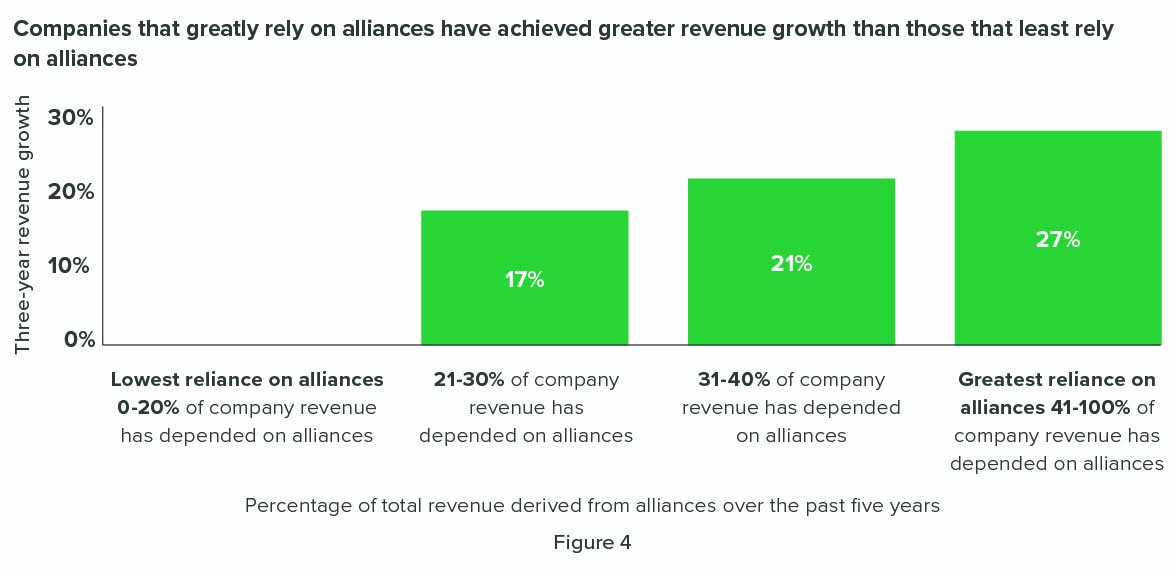The Rising Importance of Strategic Alliances for Driving Growth
Top Three Takeaways from BDO’s Strategic Alliances Webcast
Visit the BDO Strategic Alliance Webcast recording
Life sciences organizations are continuing at an increasing rate to turn to strategic alliances to drive growth. They may be onto something – BDO’s research shows a correlation between leveraging alliances and revenue growth.

Source: The State of Alliance Management
To dive deeper into this trend and explore the potential for innovative alliances, we hosted a webinar featuring Managing Director Mike Leonetti from BDO’s Management Consulting Strategy and Innovation team.
Read on to see our top three takeaways and additional insights from our panelists.
Takeaway 1: Many life sciences organizations are making alliances outside the industry
Historically, life sciences organizations sought alliances to fill specific needs such as production scale, regulatory expertise, and resources to support the launch of a new product. As these companies evolve, the range of opportunities for alliances has expanded beyond the industry. For example, life sciences organizations can now partner with AI service providers to reap value from the troves of data they collect.
In this kind of collaboration, a life sciences organization could use an AI company’s technological capabilities to examine their data and potentially unlock new discoveries in disease treatment, such as how patients respond to treatment and how a disease progresses. In return, the AI company gains access to users that help them improve their technology and potentially a data-sharing agreement. A partnership such as this allows this life sciences company to leverage the AI startup’s capabilities without a significant monetary investment, which is particularly advantageous in the current environment, where capital access has tightened.
Takeaway 2: A decentralized approach to strategic partnership management may be missing value
28% of the respondents to our live webcast polling question say management of their strategic alliances is decentralized.
The decision to take a centralized or decentralized approach to alliance management depends on resource availability. A centralized approach requires a center of excellence with professionals dedicated to managing alliances. Although it requires more upfront investment, a centralized approach helps ensure internal alignment and extract more value from alliances. A decentralized approach requires less investment but can lead to issues such as a lack of internal awareness and alignment which could hinder alliances from reaching their full potential.
Takeaway 3: Internal alignment issues are a common reason for partnership failure
57% of the respondents to our live webcast polling question say alliances at their organizations fail due to internal alignment issues.
Poor alliance management can result in a lack of internal alignment on goals and approach, which in turn leads to alliances not achieving their full expected value. Organizations should treat every alliance as a dedicated function that requires deliberate planning and strategy. To realize more value from alliances, organizations should cultivate a collaborative mindset.
For example, if a life sciences organization is working with an AI startup, clear data-sharing protocols are critical to success. Establishing these rules requires collaborating with technical leaders who set the organization’s data governance and management policies. If these leaders are not involved, the organization risks entering a partnership it is unable to fulfill. Working together with all key stakeholders positions life sciences organizations’ strategic alliances for long-term success.
Ready to extract more value from your strategic alliances?
SHARE